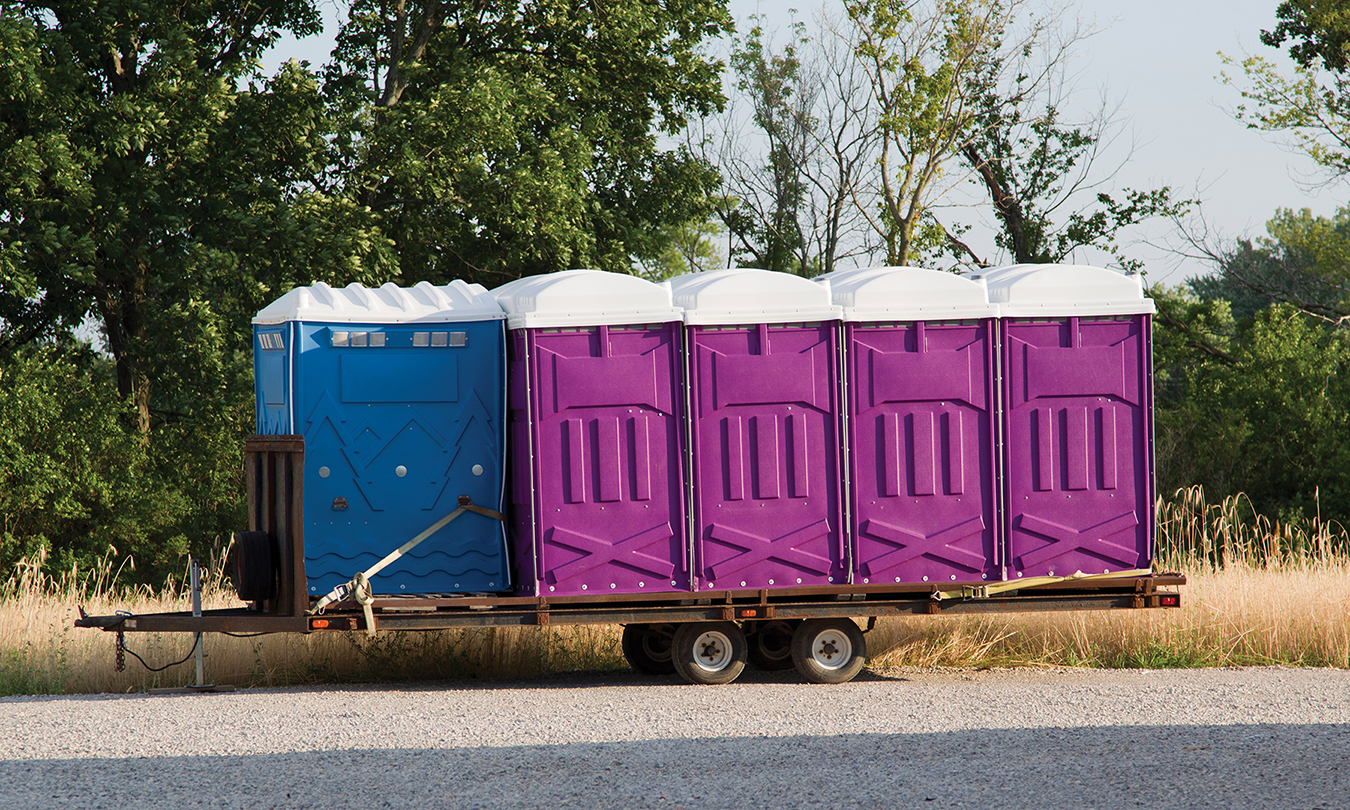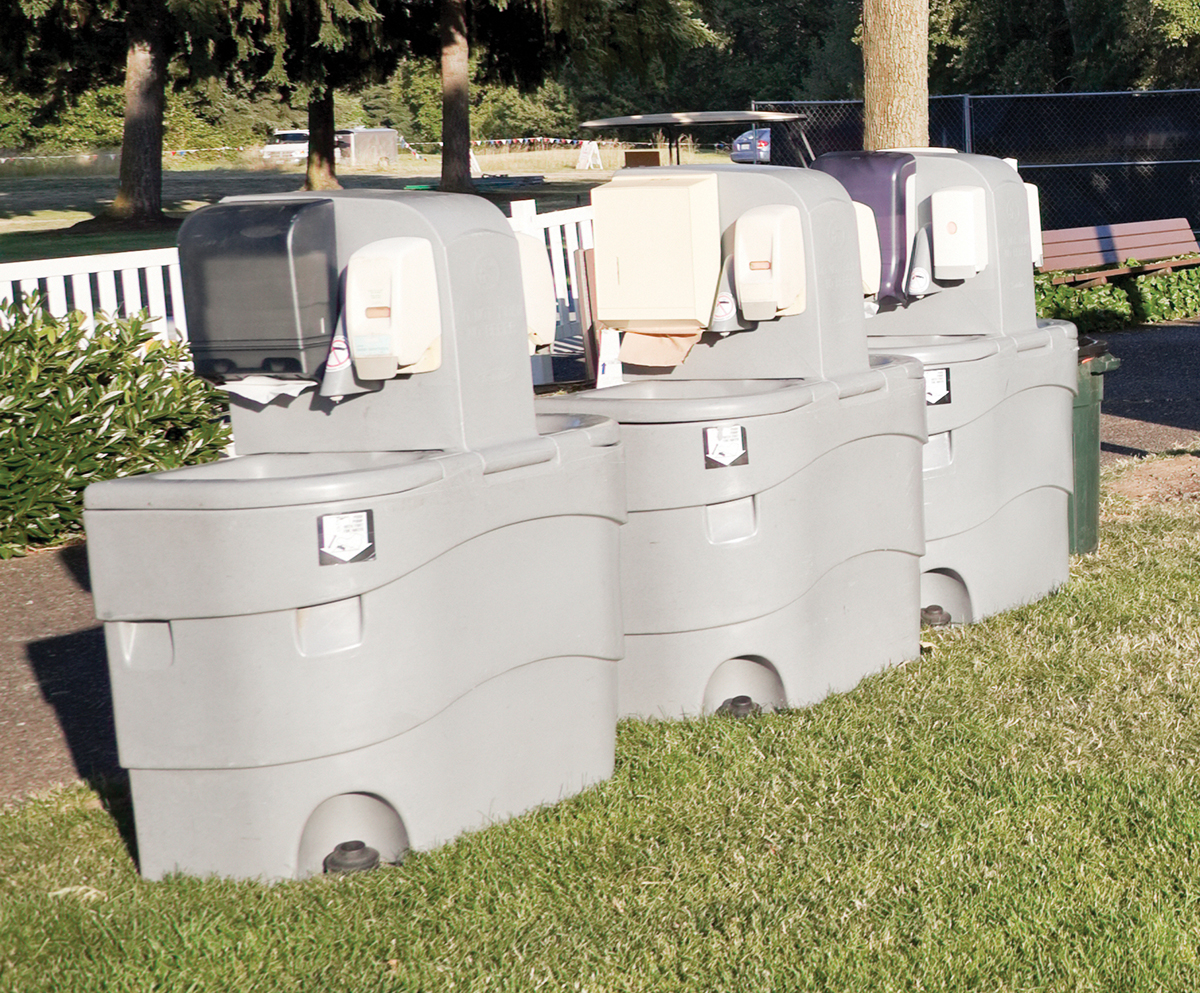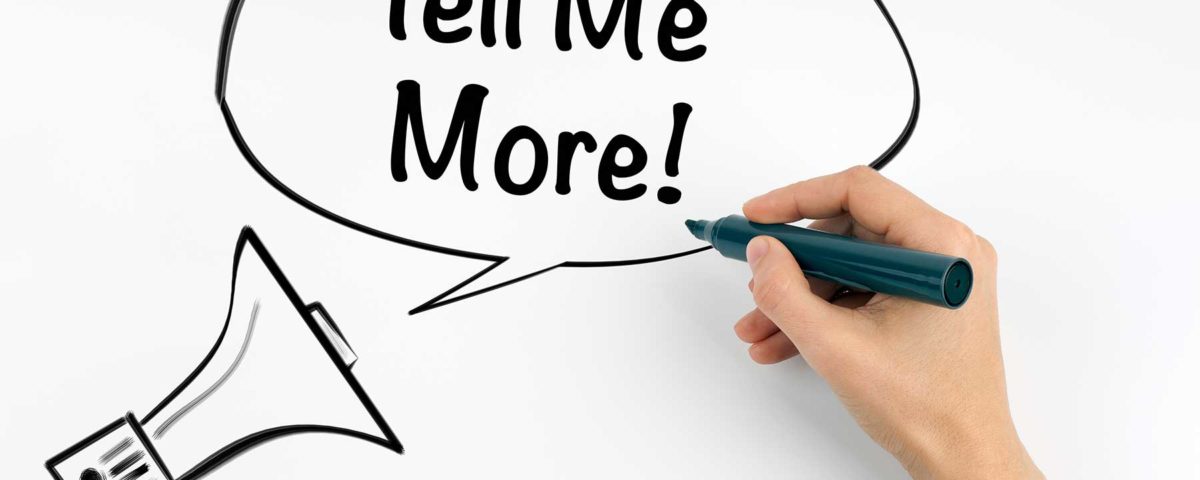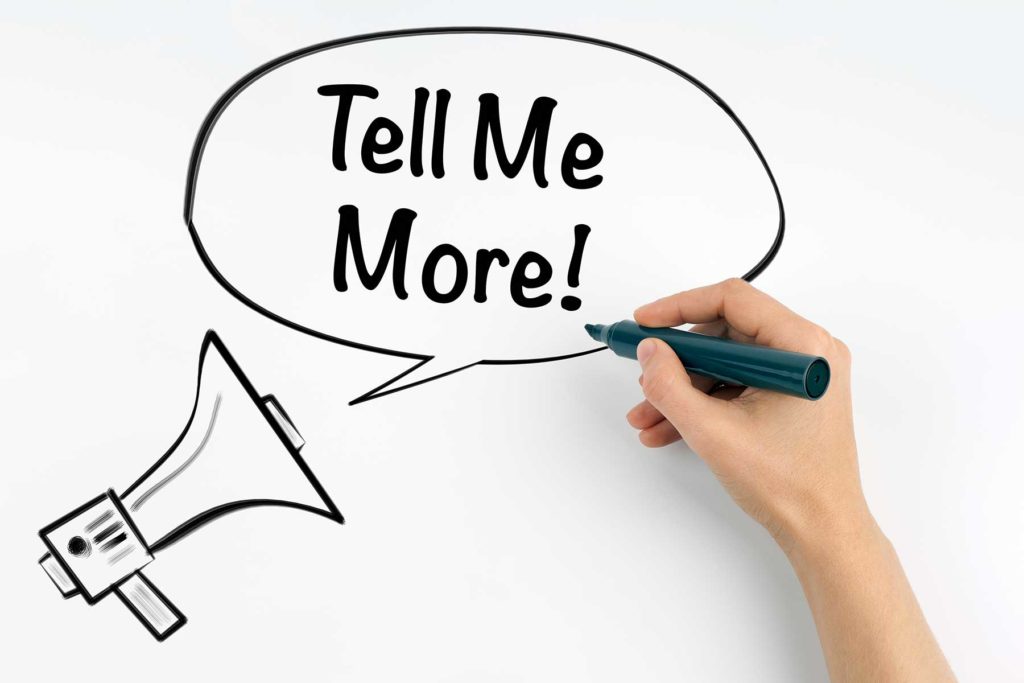
How Many Different Kinds of Units Should You Offer?
March 19, 2018
The Difference Between Sanitizing and Washing
March 26, 2018An in-demand portable sanitation operator isn’t just a good service provider, he or she is also a good teacher. That’s because one of the best services you can provide in your business is education.
Make a commitment to helping your customers through education. They’ll appreciate it, and these benefits will come your way:
- Helps prevent misconceptions from turning into problems later
- Demonstrates how well you know your business, building your reputation
- Establishes a stronger business relationship and potential repeat business
- Contributes to a greater understanding and appreciation of portable sanitation
Let’s call your new class “Introduction to Porta-Potties.”
Education is Prevention
Unanswered questions, misconceptions and lack of communication between the operator and the customer are barriers to success. Even if the service is just as it should be, your business can get dinged by disputes, unhappy customers, bad word of mouth and poor online reviews. It’s usually preventable by a healthy dose of information.
One of the most significant advantages of educating your customers is that if they know more precisely what they want, they will be able to better express their needs to you. Communication is improved, confusion is reduced. When they know more about your products and services, you may also gain the added benefit of an upsell order – for example, a customer may decide to order a higher-end unit instead of a standard unit.
Education is Connection
Education is not always about damage control. Portable sanitation is also one of those enterprises that people seem naturally curious about, so use the opportunity to connect with your customers. Many operators are outgoing, friendly and willing to share their knowledge. It’s an easy subject to talk about. Operators who are knowledgeable show pride in their work, and that’s good for business.
First-time customers have the most questions and concerns and will benefit the most from education. They may be nervous about the whole idea of renting a porta-potty or finding a reliable provider. Making special arrangements for dealing with human waste and going to the bathroom is likely to take them out of their comfort zone. You can make a good first impression by answering and even anticipating their questions. Knowledge is confidence. When you educate a customer as to what to expect, then deliver exactly as promised, first-time customers are more likely to become return customers.
Education is a continuous process, so don’t stop educating your regular customers. They can benefit on many occasions, especially when new situations arise. Adding new products to your inventory is a good example. Let customers know how they could benefit from new features or capabilities you’re offering. Or when the customer’s needs change, they may not realize their sanitation needs may change as well. For example, a construction site that adds a second shift.
Dedicated to Education
Be forward about offering information. You don’t have to wait to be asked. Look for opportunities to offer a “teachable moment.” Over time, you may even develop your own speech that covers the basic information most people want to know.
One of the best things you can say to a customer is, “I’ll be happy to answer any questions you have.” If you are asked a question and you don’t know the answer, it’s OK to say, “I don’t know.” But follow up by telling your customer you will get the information they want – then do so. Remember, every day on the job is an opportunity for you to learn as well. An experienced teacher is the best teacher.
First Impressions
Your first contact, and the first opportunity to educate your customers, is their first phone call. They’re inquiring about renting a porta-potty for an event, construction site, farm, etc.
At this beginning stage, the customer should learn three basic aspects of your portable sanitation rental business:
- How simple the rental process is
- How you (the operator) do all the work
- The high quality of your products and service
First-timers might think they will be responsible for doing some of the work, such as set up, or that they will have to go through a lot of red tape to rent a unit.
Website
Do you have a website? You should, and here’s why. As the discussion turns to units and other products, ask if they’ve checked your website and know what you have to offer. (Do they know you have a website?) Remind them they can always check your website for information. Educating the customer about your website builds awareness of your company and adds to your professional image.
One great advantage of your website is that you can use as much space as you want to describe the many features of your units and other products. When you don’t have a lot of time to spend with customers, you can promote just the highlights, then refer them to your website for more complete information.
You can use the information found on the website of the manufacturer for complete and accurate descriptions of the selling points for all your products.
Product Education
Units
If they haven’t already prepared by checking the website, the education continues as you tell them what type of units you have available, such as a standard unit, luxury unit and wheelchair-accessible or ADA-compliant unit. Almost everyone knows what it’s like to use a porta-potty, but when they’re actually renting, the details about the units become more important.
Divide standard features from options and amenities. Again, if the customer hasn’t done his or her homework, they may be surprised (and impressed) when they learn how options and amenities can enhance their guests’ experience.
You won’t usually describe the units in detail, but let’s say a potential customer asks you, “What do I get for the price” or “Is it a good quality portable toilet?” Your answer should tell the customer that the standard features are customer oriented, putting the emphasis on safety and comfort. Some of the most common features of most models are:
- Sturdy design for secure outdoor use in all weather
- User-friendly
- Comfortable, roomy interior
- Translucent roof for good lighting
- Anti-slip floors for safety
- Maximum ventilation
- Occupancy signal latch
- Tissue rolls (two, three or four)
- Sanitary seat deck and floor design
- Non-splash urinal
- Strong doorjamb
Amenities and options enhance the user experience by adding more luxury and comfort. Tell your customers that amenities make a porta-potty more like using an indoor bathroom. Features include:
- Instant antiseptic hand cleanser and foam
- Sink
- Paper towel dispenser
- Shelving
- Solar or LED lighting
- Mirror
- Recirculating flush, fresh water flush, and city mains varieties
- Disposable paper seat covers
Some models use a corner tank design that allows for more amenities, such as a sink and non-splash urinal.
Don’t forget that wheelchair- and ADA-compliant models have their own benefits, mainly:
- More open interior floor space
- Oversized, self-closing door
- Roll-in ground level floor access
- Interior handrails
If you have units in more than one color, this is also a selling point. Color choice adds a little flair to the selection process, and some customers will jump at the chance to pick their favorite. See the JohnTalk article UV Protection and Color for Your Units for more information.
Sinks
Depending on the model, standalone sinks offer a number of features that you can promote.
- Larger capacity for more uses before refilling (for long-term construction sites or multi-day festivals)
- Extra-large basin for full forearm immersion
- OSHA compliant
- Foot pump for hygienic, hands-free operation
- Liquid soap and paper towel dispensers
- Warm water handwashing
- Multiple wash stations (two or four) for high traffic and to fit small spaces
Hand Sanitizers
Don’t overlook the details of this dependable standby product.
- Single, double-sided or four-sided access to foam sanitizing dispensers
- ADA compliant
If you are asked about choosing between liquid soap and hand sanitizer, the Centers for Disease Control (CDC) notes:
Washing hands with soap and water is the best way to reduce the number of microbes on them in most situations. If soap and water are not available, use an alcohol-based hand sanitizer that contains at least 60% alcohol.
“The Blue Stuff” (and the Environment)
People can be surprisingly interested in “what’s down there” in the waste tank. As you explain that it is a deodorizer with fragrance enhancers that will control odors for the entire rental time, your answer can become a quick lesson in good sanitation practices that lead to customer satisfaction.
With so many people advocating for the environment, a discussion of this type can lead to a further opportunity to educate your customers about the environmental benefits of portable sanitation. Mention if you are using products specifically described as environmentally friendly, and that waste is properly disposed of in regulated waste disposal sites. Also, see below about World Portable Sanitation Day.
Get the JohnTalk “ALL-ACCESS PASS” & become a member for FREE!
Benefits Include: Subscription to JohnTalk Digital & Print Newsletters • JohnTalk Vault In-Depth Content • Full Access to the JohnTalk Classifieds & Ask a PRO Forum
Cost Education
Many customers may be comparison shopping, so if given the opportunity, when you talk about cost, give them a quick lesson in exactly what they are getting for their money.
The major points you want to get across:
- Your rate is competitive compared to other area portable sanitation businesses
- You offer additional value for the money based on:
- High quality of the products
- Reliable, customer-focused service
- Whatever else sets you apart (professionally trained drivers, uniforms, etc.)
Tell your customers that your goal is a clean, healthy, sanitary and completely satisfactory customer experience. You want your work to earn positive reviews!
Also, make clear that payment is required prior to delivery. Construction and industrial customers are usually billed on a four-week, “monthly” basis. See the Q&A below for more.
Delivery and Placement
When discussing delivery and placement of units, walk the customer through the process from beginning to end. You want to reassure the customer that it’s fairly simple and that you do all the work. In fact, the customer doesn’t even have to be there.
Confirm the delivery address, contact name, phone number, time frame and placement location. You can save a lot of frustration by educating your customer about potential obstacles to delivery, such as fencing.
For construction customers, locating the unit is usually the biggest issue. Determine an exact location beforehand, or you’ll end up wasting time getting in touch with the person in charge, and possibly moving cars or equipment before you can unload. Discuss the site hours, especially if the site is fenced. Portable restroom operators are on their routes early, so if it is fenced, someone will have to be on-site to let you in.
Public Education and World Portable Sanitation Day
In addition to educating customers one at a time, you can educate potential customers by the hundreds by taking part in community events. Your local Chamber of Commerce often sponsors these types of “meet and greet” events.
World Portable Sanitation Day (WPSD) is one public event just for public sanitation operators. The portable sanitation industry, led by Portable Sanitation Association International (PSAI), celebrates WPSD on November 19. Through events and activities, operators worldwide come together to educate their customers and the general public about the vital services they provide every day. The PSAI also has stickers available for purchase that can go inside the toilets, including one that brings attention to the water savings provided by portable restrooms.
If you are a member of PSAI, consider scheduling community outreach activities, such as setting up an educational display in public plazas and markets, where you can meet the public and offer giveaways and WPSD materials. Some companies have also provided free water or ice cream and sponsored contests for the kids. You may meet some future customers! If you are a PSAI member, you will find a lot of information on how to get out the word on the PSAI website, psai.org.
Top Questions
Portable restroom operators provided a list of some of the questions they have received most often.
These questions are from the typical individual or weekend renters:
Q: Will the unit be clean when it gets here?
A: The unit will arrive clean. If the customer will be present during delivery, offer to walk them through the operation. It can be especially helpful to educate them on the use of a sink/flush unit or other amenities.
Q: Do I need to provide supplies or hand sanitizer?
A: All necessary supplies are included, particularly toilet paper, towels, and if you include it as part of the rental, hand sanitizer. Sanitizer is often an extra fee, but a lot of operators include it in the unit rental fee (and mark up the rates up on the front end). This can be a selling point over competitors who don’t include it but offer cheaper rates. This is also an opportunity to upsell a customer to add a handwashing station and other amenities.
Q: Will the unit kill my grass?
A: This is a common concern of the customer who needs a short-term rental (birthday party, etc.). Since the rental is most often no more than 3 days, the grass is usually unaffected. However, since there may be a lot of traffic in and out of the unit, you can recommend that the customer consider placing the unit just off the sidewalk or putting down some wood for a landing.
Q: How do you deliver the unit?
A: Depends on the equipment you have, but usually with your pumper truck, pickup or by trailer. Ask if there is anything about the address to know ahead of time, such as, if it’s located on a dead-end street, one-way street or alleyway, if there are small bridges to cross, etc. Inform the customer that you will unload the unit yourself and use a dolly to maneuver the unit to the correct placement location.
Q: Will the unit smell?
A: No. The unit will be freshly cleaned with seasonal fragrances in the waste tank and a malodor additive for added insurance.
Q: Do I need to be home for delivery?
A: No, you do not. However, make sure you have clear instructions on where to place the unit. One easy suggestion is to mark the spot (with a bucket, spray paint, etc.). Or you can go high-tech by having the customer send a Google Earth map with an indication of where to place the unit.
Q: Can the unit go in my backyard?
A: Yes, if there is sufficient access. Determine if your truck can get within 30 feet of the backyard. Ask about fencing. If there is a gate, is it wide enough to get the unit through it? This is a good opportunity to educate the customer about how the unit is picked up. The delivery driver can likely place the unit as far away as the customer wants, but when it is time to pick the unit up the unit needs to be pumped before moving (otherwise, there is a risk of injury and spilling waste in their yard, and no one wants that!) That’s why the unit has to be close to a truck access point.
Q: Can I request a specific time for delivery?
A: This depends on how you schedule your deliveries. If you can’t promise an exact time, promise to deliver within a time “window” (3 hours for example), or an a.m. and p.m. time slot. You can also phone or contact the customer when you are on your way.
Q: Do you pick up the unit right after my party?
A: You may get requests to rent for just a few hours (“Can I just rent the toilet from 2 p.m. Saturday to 11 p.m. Saturday?). No, the rental period is for a certain number of days (1-4), not hourly, so there is no benefit to same-day pickup. In fact, the rate will actually be much higher to make an extra trip to remove just one unit, due to the additional cost of fuel and operator time.
Q: If I am renting the unit in a park and I leave it unattended after the party, am I responsible for potential damages? How do we prevent damage from happening at that point?
A: When customers are especially concerned about damages, have them sign an optional damage waiver. Provide a lock and key, and let them know they will be required to lock the unit when done to prevent unauthorized use.
Q: Do we need to reserve the unit in advance or can I call you the day I need it?
A: Reserve as far in advance as possible. Same-day or last-minute delivery requests are not always possible and will cost extra as you are already on your work schedule for the day.
Common questions from construction customers:
Q: How do we get billed?
A: A common and practical approach is the four-week, “monthly” bill. The billing cycle is actually every four weeks, or 28 days, beginning on the date of the delivery up until the first common bill cycle. Then, billing will be on a 28-day rolling cycle. This might be confusing at first for some customers, so an explanation of “monthly” may be necessary. Billing every 28 days can improve cash flow because there are 13 billing cycles in a year instead of 12. The bill can be sent via email.
Q: Do I need to call you when the unit needs to be emptied?
A: No. Weekly cleaning is included in the rental. Tell the customer what day of the week you will be there based on its location on your route (although the day is subject to change). Remind the customer that you would greatly appreciate if the path to the unit is unblocked on that day. You can also regularly check with the customer to see if circumstances change at the site, such as adding more workers or bringing in additional equipment that might block the current location of the unit.
Q: Can I lock the unit so kids don’t get into it at night and vandalize it?
A: Yes, absolutely. Units use a lock hasp. Inform the customer that you prefer that they use your lock because you have a universal key and you won’t have to ask the customer for the key when you clean it each week. The lock and key are free, but if they need to be replaced, there may be a fee. Ask the customer to request it at time of order because not all units have them installed.
Q: Can you clean it if I’m not there?
A: Absolutely! We’ll even write down the date we cleaned it on the inside of the unit (on the service record sticker).
Q: How many toilets do I need?
A: OSHA standards are below. The portable sanitation industry standard recommends 1 toilet for every 10 workers.
OSHA
Number of employees Minimum number of facilities
20 or less 1
20 or more 1 toilet seat and 1 urinal per 40 workers
200 or more 1 toilet seat and 1 urinal per 50 workers
Looking to Take Your Portable Restroom Business to the NEXT LEVEL? Download our FREE Guide: “Your Guide to Operating A Portable Restroom Business.”
Thinking About GETTING INTO the Portable Restroom Industry? Download our FREE Guide: “Your Guide to Starting A Portable Restroom Business.”






